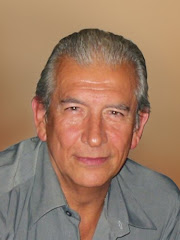In this video, watch Ramon Cuevas using the new and improved CME Physical Therapy set.
Monday, November 30, 2009
Subscribe to:
Post Comments (Atom)

CME, the acronym for Cuevas Medek Exercise, is a physical therapy approach for infants suffering abnormal developmental motor evolution caused by a known or unknown non-degenerative syndrome affecting the Central Nervous System.
This therapy can be applied to children from the age of 3 months until they achieve and control independent walking. Because the CME physical therapy practitioner needs to expose the infant to the influence of gravity, by providing progressive distal support, the use of this therapy may be limited by the child’s size and weight.
This approach was created and developed by Ramon Cuevas, Chilean physical therapist, during the early seventies in Caracas, Venezuela.
The fundamental assumption of CME Physical Therapy is that developmentally compromised infants need to reinforce their natural recovery potential. This underlying property of the Central Nervous System continues to propel the developmental process even after the sequelae are established.
The natural reaction of the “recovery potential” alone, cannot lead the compromised child out of the abnormal motor developmental situation. Therefore it is crucial to begin motor therapy at the same time the first signs of delayed motor function appear.
The final level of motor independence achieved by the child will depend on the following:
1) The early recognition of the motor developmental abnormality.
2) The existence of brain’s recovery potential.
3) The timely application of a reliable approach of motor therapy.
4) The constant execution of appropiate exercise until achieve total motor control.
| 1. | Provokes the appearance of absent automatic motor functions. |
| 2. | Child’s cooperation and motivation are not requisites in CME Physical Therapy. |
| 3. | Expose the child to the natural influence of the force of gravity with gradual progression to distal support. |
| 4. | Stretching maneuvers are integrated into the CME Physical Therapy. |
| 5. | High muscle tone condition in the lower extremities is not an obstacle to stimulate standing position control. |
| 6. | A trial period is proposed to demonstrate the short term results of CME Physical Therapy. |
There are a few contra indications to using CME physical therapy: | |
| 1. | Any diagnosis of degenerative nature affecting the neuro-muscular tissue (progressive diseases). |
| 2. | Diagnosis of Osteogenesis Imperfecta. |
| 3. | Uncontrolled seizures. |
| 4. | Child younger than 3 months of age, except when the therapist in charge is CME II or CME III graduate. |
| 5. | To use this manual as a therapy guide, in disregard of the DISCLAIMER, by any Physical or Occupational Therapist, not in possession of a CME diploma level II or level III, awarded by the Cuevas Medek Exercise Continuing Education Program, and signed by Ramon Cuevas. |
| 6. | To use the inserted information to treat a child without the advice of a CME certified therapist. |
0 comments:
Post a Comment